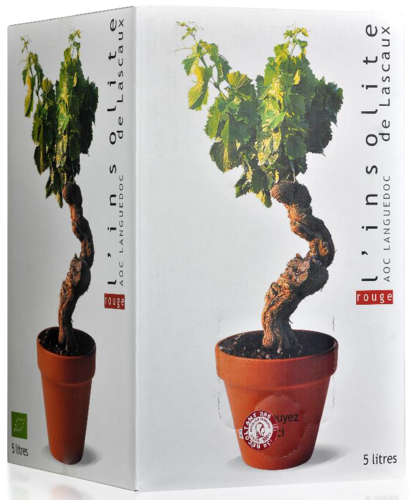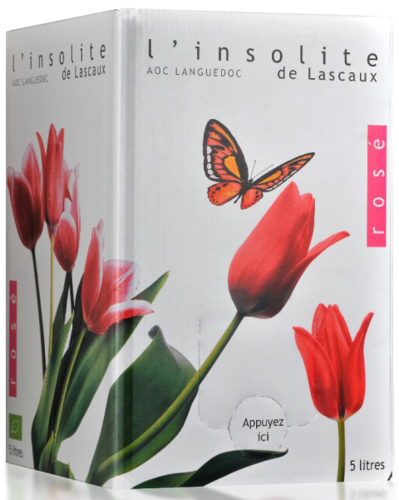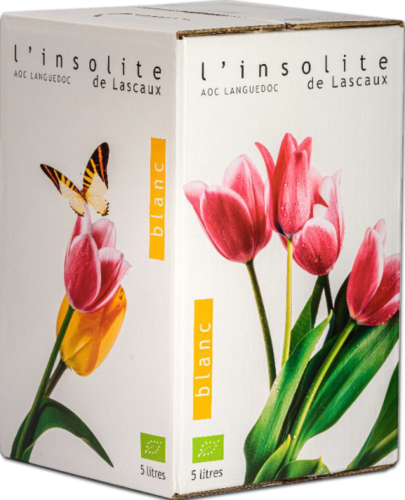organic wine, biodynamic wine, Demeter wine, na... Organic wine estates Château de Lascaux
Château de Lascaux
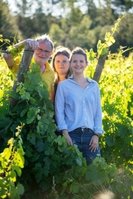
The history of the Château de Lascaux begins in the 16th century when the Cavalier family settled in a former medieval priory at the foot of the majestic Pic Saint-Loup.
Here, in the heart of the picturesque village of Vacquiéres, the years have passed almost without a trace, although each generation has left its mark. The Cavalier family has always devoted itself to agriculture and viticulture.
Photo left: the winemaker Jean-Benoit Cavalier with his daughters Marie and Maguelone
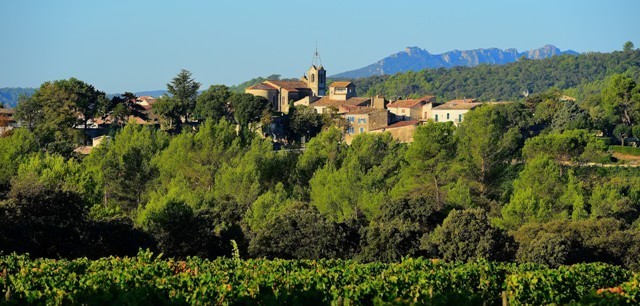
The village of Vacquières in the middle of which is the Château de Lascaux
In 1984, Jean-Benoît Cavalier took over the management of the Château de Lascaux - please do not confuse it with the famous Lascaux caves in the Dorgonne department with their unique cave paintings from the early days.
He planted new grape varieties that were better adapted to the local climate, planted new vineyards, built new cellars and equipped them with modern equipment such as presses, stainless steel tanks and wooden barrels to improve his wines with greater precision.
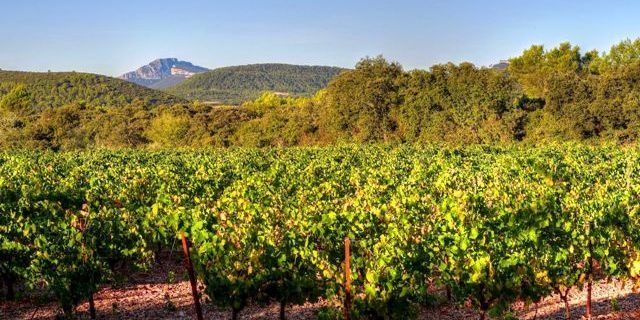
Vineyard surrounded by garrigue, with the Pic Saint Loup in the background
Inspired and animated by the garrigue (shrub heath) that surrounds the vineyards and Monsieur Cavalier recognized its immense ecological importance as a bio-reserve and retreat for insects, birds and wild animals, he turned to biodynamic working methods. He learned to regard nature as a living ensemble and to listen to its rhythm and to react and subordinate himself to it. In any case, we find this to be a completely natural reaction of a sensitive and logically thinking person.
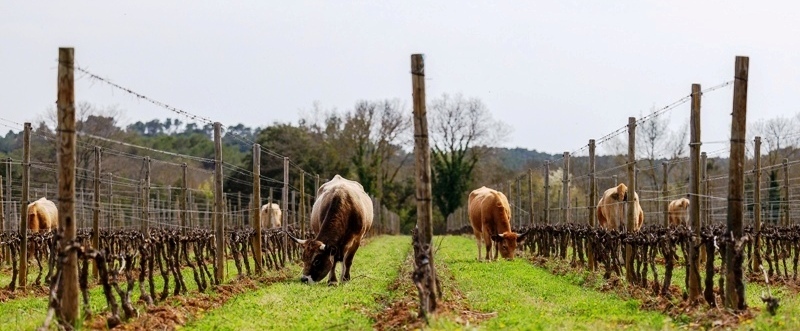
Cows with horns in the Château Lascaux vineyard - biodynamic farming would not be possible without them. hey belong to a farmer from Aubrac, who also lets his sheep graze in the vineyards, which fertilize it at the ame time. You can find more about this in our organic wine lexicon
Since then, the Château de Lascaux has been organically certified, a member of the Demeter Association and certified by Demeter. The resulting biodynamic wines are perfectly balanced, with fine tannins and inspiring freshness are the evidence of a successful work in the vineyards and in the winery.
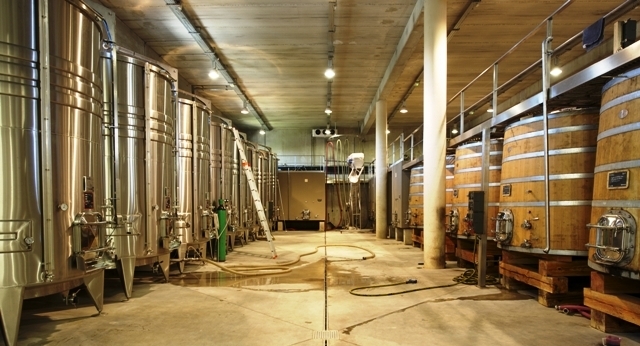
Organic wine processing unit with temperature-controlled stainless steel tanks and large wooden casks
The love and enthusiasm for their homeland and their profession can also be understood as a vocation, because responsibility for the Château de Lascaux is slowly being prepared for the 14th generation by the 15th generation.
Marie and Maguelone, daughters of Isabelle and Jean-Benoit CAVALIER, will become the future owners of the winery.
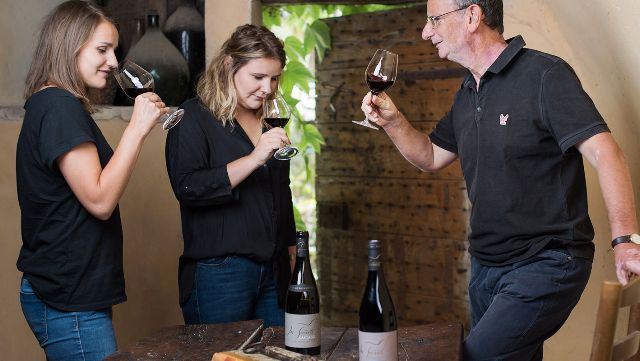
Marie, Maguelone and their father Jean-Benoit Cavalier
The climate
Mediterranean with continental influences coming from the Cevennes. This is accompanied by more rainfall than in the rest of the Languedoc region, giving the vineyards large water reserves. During the ripening period there are large temperature fluctuations with cool nights and hot days, which favors optimal ripening of the grapes. Although the relief of the landscape protects the vineyards from strong winds, the mistral and tramontane (fall winds) dry the vines and grapes after rainfall, thus preventing the occurrence of fungal infestation.
The soils in the different vineyards
The Lascaux vineyard is located on the hill of the same name in front of the winery. Its soil consists of hard limestone and red clay and is generally very rocky, allowing the vines to develop fully. In fact, the name of the winery comes from this terroir. It means “limestone” in Occitan.
The soils in the Les Costes and Le Patus vineyards
are located near Vacquières, facing west, on Lower Cretaceous soils. They are made up of marls (clay mixed with calcium carbonate) and limestone of marine origin.
The soil of the Tourtourel vineyard
consists of "Gravette de Corconne", an accumulation of limestone chips from the Jurassic period, formed by ice that formed in the small crevices of the limestone rock, cracked and split into small pieces of gravel, which were then overflowed by Quaternary floods spread over wide tracts of land. The Tourtourel vineyard is located north of the Lascaux, Les Costes, le Patus vineyards.
Other facts about the Château de Lascaux
- Size of the vineyards: 85 hectares
- Planting density of the vines: 6,200/hectare
- Average harvest volume approx. 40 hl/hectare
- In addition to the vines, a few olive trees were planted to cover our own olive oil needs.
- Since no insecticides are used in the vineyards, a beekeeper places beehives in the garrigue surrounding the vineyards.
- Permanent employees in the wine department 15 people
- Seasonal additional staff for grape harvest and vine pruning 9 people.
Grape varieties of the Château de Lascaux
- Syrah
- Grenache
- Mourvedre
- Vermentino
- Rousanne
- Marsanne
- Viognier
- Cabernet Sauvignon
- Merlot
Château de Lascaux Languedoc AOC Garrigue, biodynamic wine, white from € 10.55Product no.: 033110.95 € / bottle(s) *
1 l = 14.60 €
Delivery period 2-3 days |
Château de Lascaux Languedoc AOC Garrigue, Plus Que Nature, biodynamic wine, red, from € 12.55Product no.: 033212.95 € / bottle(s) *
1 l = 17.27 €
Delivery period 2-3 days |
Château de Lascaux Languedoc ECLAT DE GARRIGUE, biodynamic wine, rosé, from € 12.55Product no.: 032912.95 € / bottle(s) *
1 l = 17.27 €
Delivery period 2-3 days |
Château de Lascaux Pic Saint Loup CARRA, biodynamic wine, red, from € 12.55Product no.: 032812.95 € / bottle(s) *
Old price
12.95 €
1 l = 17.27 €
Delivery period 2-3 days |
Château de Lascaux Languedoc, LES NOBLES PIERRES, Pic Saint Loup red, from € 24,60Product no.: 032725.00 € / bottle(s) *
1 l = 33.33 €
Delivery period 2-3 days |
New Domaine Ortola Languedoc AOP red, biodynamic wine, from € 9.95Product no.: 0340Soon available
1 l = 13.80 €
|
New L'Insolite de Lascaux, Languedoc AOC, biodyn. wine, red, BIB, 5 LProduct no.: 0333soon available
1 l = 8.70 €
|
New L'Insolite de Lascaux, Languedoc AOC, biodyn. wine, rosé, Bag in Box 5 LProduct no.: 0334soon available
1 l = 8.70 €
|
New L'Insolite de Lascaux, Languedoc AOC, biodyn. wine, white Bag in Box 5 LProduct no.: 033543.50 € / box(es) *
1 l = 8.70 €
|
![Biowein [pur] Hartl - organic wine shipper](/WebRoot/Store7/Shops/87b180e2-5584-4f7d-8168-acd5dfe63e0b/Styles/Sharp[3]/logo.png)









